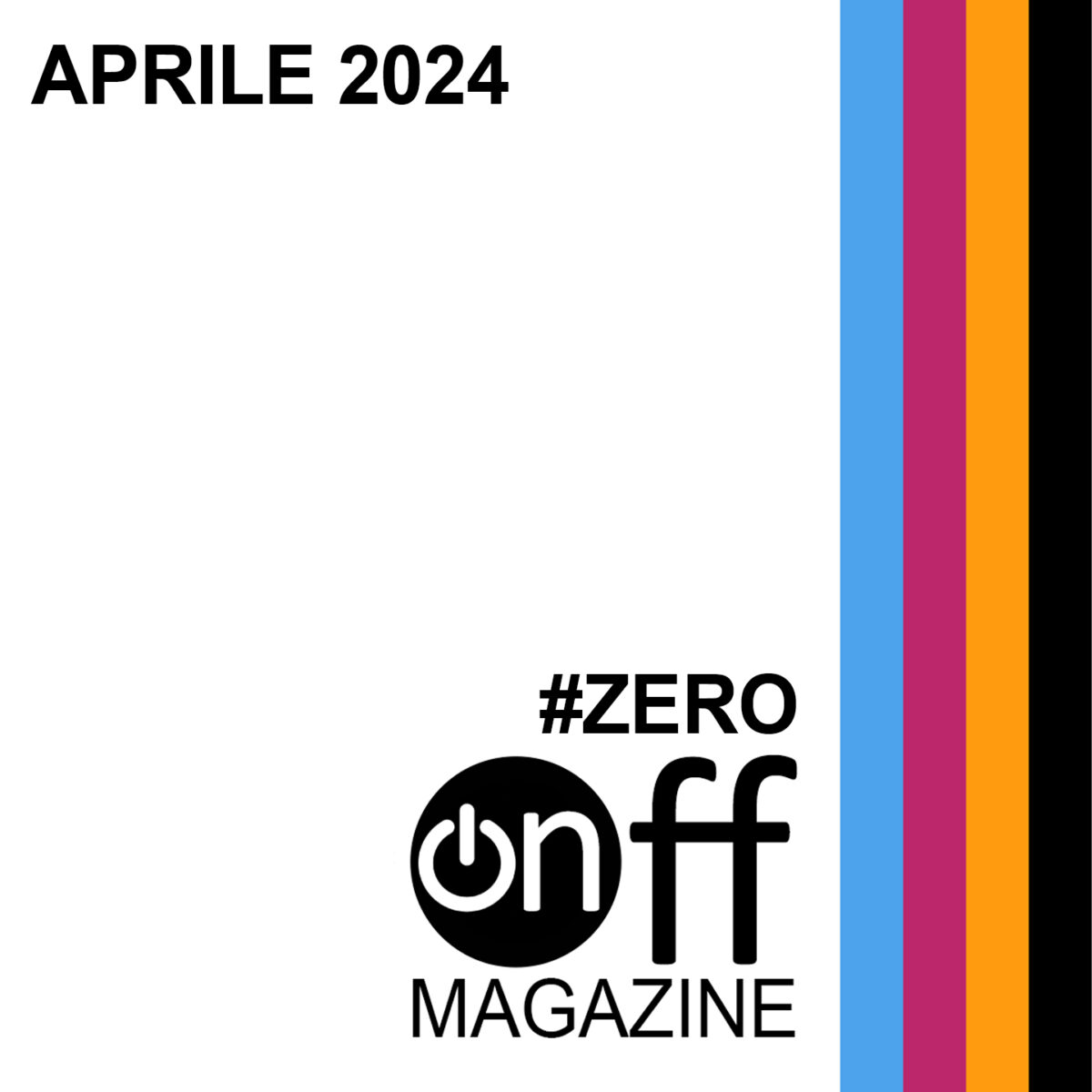Listen to the article here:
Lessons in Sound is a review dedicated to sound as a tool for exploring artistic reality, outside the primacy given to the visual. For the second year in a row, Zerynthia, Association for Contemporary Art OdV, in collaboration with the Academy of Fine Arts in Rome, organized this day in the spaces of the aula magna of the Roman institute, inviting four guests to expose their experience with the reworking of sounds and to share the creative sonic and musical possibilities of their personal artistic research. This year's guest speakers were art historian Lucia Farinati, musician and performer Luca Venitucci, radio-sound artist Jonathan Frigeri and Simone Bertuzzi of the artistic duo Invernomuto. Here is the full video of Sound Lessons #2:
Lucia Farinati
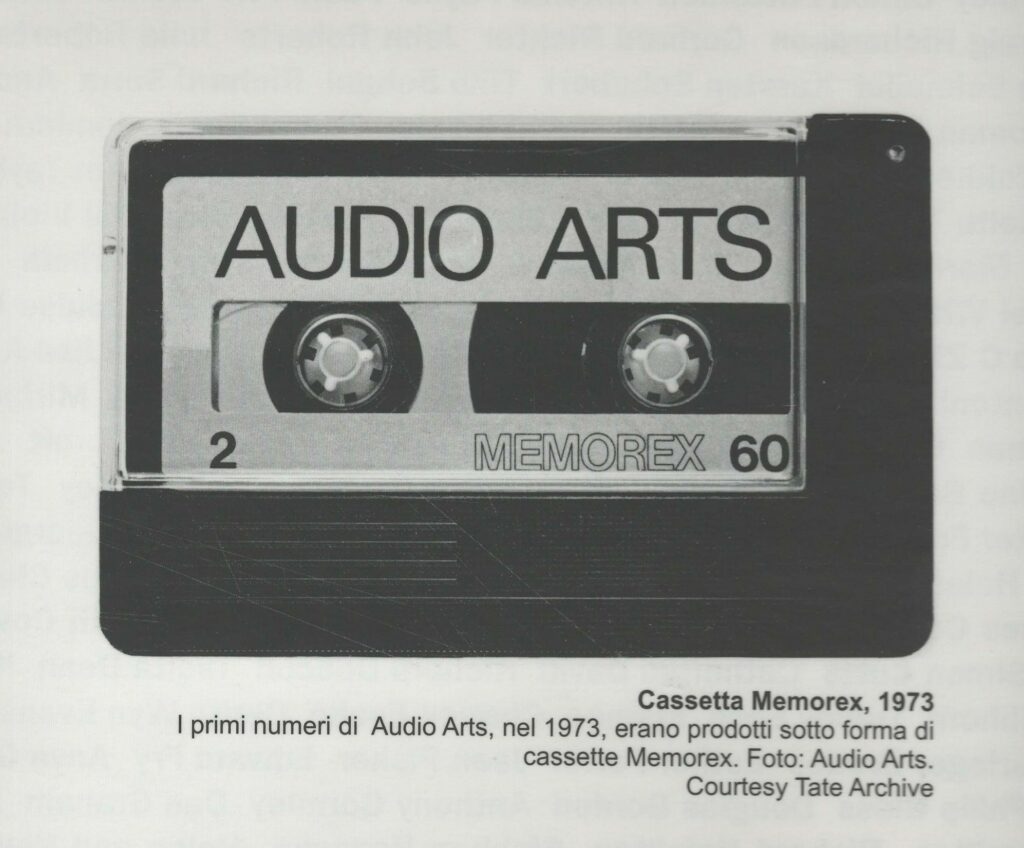
Voice recording. Recording is not an exclusively technical procedure; it is a cultural and historical phenomenon that must be understood in parallel with the emergence of recording technologies. The culture of viewing is accompanied by a culture of listening. Recording is an artifact, a filtered process, mediated by technology, this involves social and relational processes. The spread of the portable recorder in the 1960s enabled not only new genres of music but also new field research, particularly in ethnography and ethnomusicology research that took place in Italy at that time. There is a parallel between underground music and oral history that allows for field research opening up new relationships not only between historical and social studies, but also between militant and critical practices.
Luca Venitucci
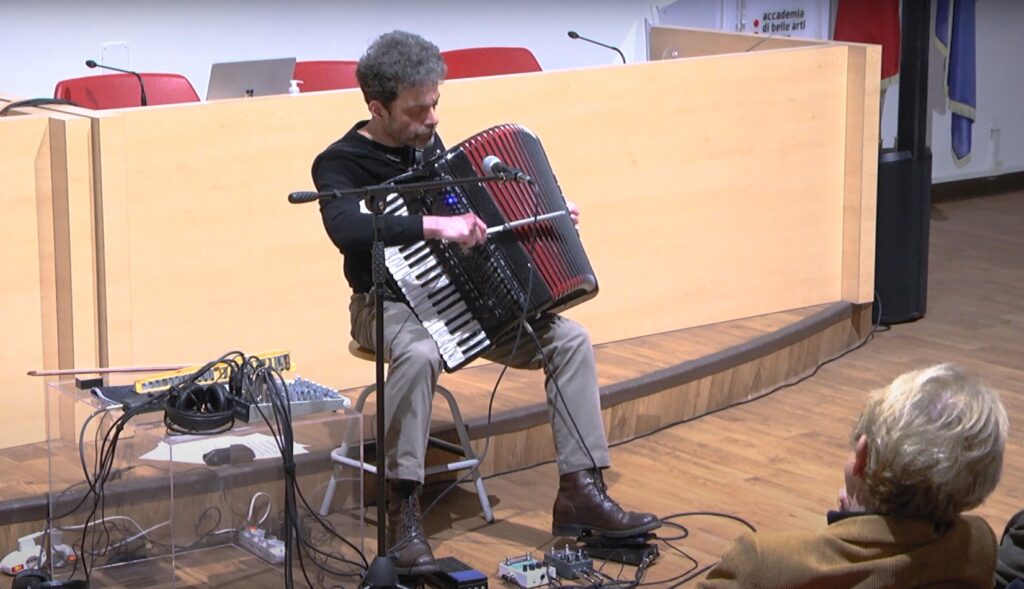
I want to capture and exploit, explore all the elements that influence in the creation of a sound: the posture of physical movements that emphasize instability, the amplification and multiplication that occur through real-time recording, the overdubbing to emphasize some of these processes. By creating interference with the sound of the instrument, you can interfere with the frequencies. Another aspect to keep in mind is that of listening: the American composer Pauline Oliveros has inspired her entire practice by a concept/philosophy called Deep listening, which she defines as "learning to expand the perception of sound to include the entire space-time continuum of sounds of the greatest possible amplitude and complexity." I too am a composer and performer who makes music in real time that did not exist before, and of course I find myself in the position of having to listen to what I am doing while I am doing it.
Jonathan Frigeri
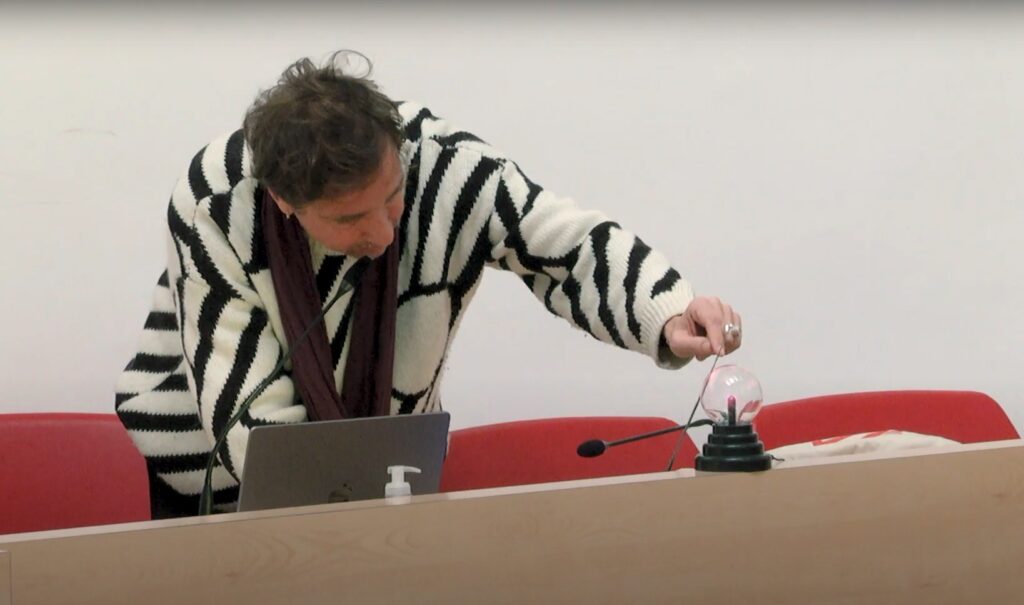
There are different ways to listen and hear, one can hear without listening, one can hear words without understanding them, a sound without understanding it. While hearing is related to the physical perception of sounds, listening, on the other hand, requires concentration, involves active involvement of the mind. Obviously between listening and hearing there is a whole range of grays that may depend on the situation we are in, the way we are. Distraction and concentration are very radio-like characteristics. The idea of listening to radio is different from listening in a concert hall or listening to a CD. In radio there is intimacy, you often listen to it at home, in the car, alone while you are doing other activities. I am constantly questioning how radio works, its technical and social paradigms, and it can be said that "radio-art" is not simply sound art broadcast on the radio, but something much more complex, and one has to take into account these specifics of it.
Simone Bertuzzi (Invernomuto)
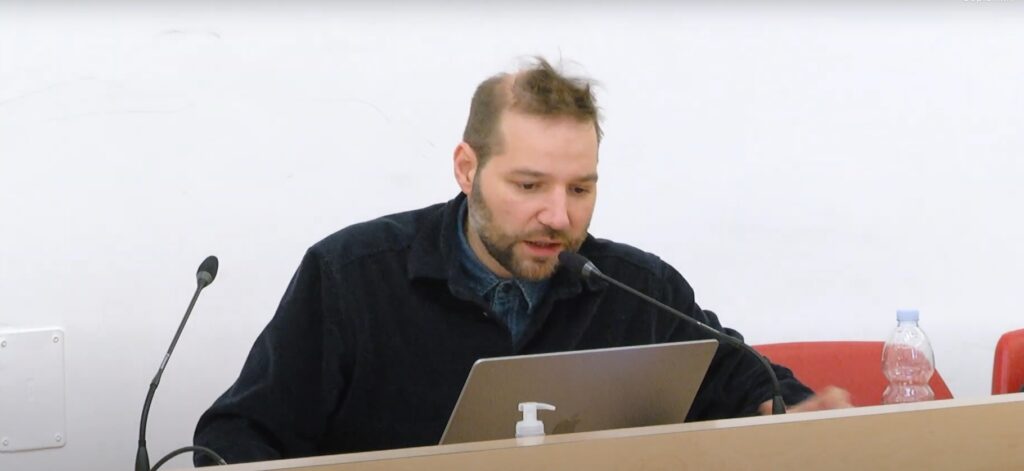
The Riviera Romagnola's Melody M ecca, more commonly known as the Mecca, was an active club for about two decades, from the early 1980s until the late 1990s early 2000s. Its resident DJ was DJ Pery, whom we interviewed. He told us that for an entire season every Saturday he had played a track by Algerian Hamid Baroudi. Reconstructing what is behind this cultural object, the music track and its related video clip, we discover that it was composed by an Algerian musician who lived most of his life in Germany, that the video clip was shot in Andalusia and that it later became a hit on the Adriatic coast. So there are a number of geographical trajectories that run through the Mediterranean area and that become a fairly precise example from our point of view of our Blackmed project. Blackmed stands for Black Mediterranean and in fact is intended to be a kind of archive, personal and certainly incomplete, of music, sounds, sound objects from the Mediterranean area whose characteristics are similar to this Baroudi story.
In the first edition of Lessons in Sound 2023, the featured artists were performer and opera singer Ana Spasic, Alessandro Aiello of Canecapovolto, and Stuart Fowkes of Cities and Memory; video of the entire lecture here:


